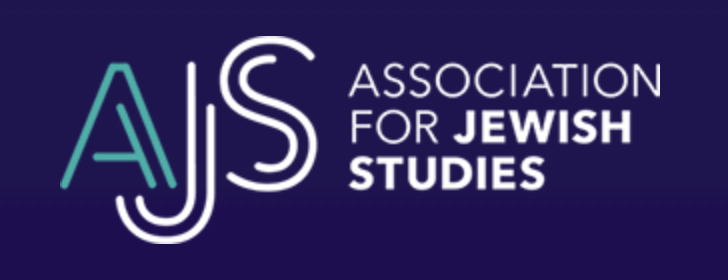
As hinted in various posts, my big professional pivot has been in the works for a while. This year I started my rabbinical studies at the International Institute of Secular Humanistic Judaism (IISHJ). IISHJ requires all its rabbis to complete an advanced degree in Jewish Studies, which brought me to the Graduate Theological Union’s Richard S. Dinner Center for Jewish Studies. In addition to my full-time work, I’m studying full time for a masters degree, and this week I finished the first semester. My plan is to pivot my scholarship at UC Law SF toward Jewish law and Jewish studies, and I have big plans for fostering and encouraging a vibrant academic Jewish legal experience on campus. After retirement from legal academia, I plan to turn to rabbinical work full time.
Today marks an important milestone: I attended my first-ever annual meeting of the Association for Jewish Studies which, conveniently, is being held in San Francisco. I’m not presenting anything–my two brand-new papers haven’t been submitted for publication yet–and it’s been a great experience to listen, rather than talk! Getting into a new field requires quite a bit of humility, and I confess to being overwhelmed when I visited the huge book exhibit and saw the vast wealth of knowledge and original research. It’s daunting and, at the same time, exciting to join such a prolific enterprise, and I wonder what I can contribute to this flourishing field.
I started my day with a panel on visual representations of violence, in which Louis Kaplan introduced us to the work of photographer John Guttman. Trained as an expressionist painter, Guttman switched to photography when he figured that he would not be able to leave Berlin with money, but would be allowed to take expensive equipment out of the country. He bought a wonderful camera and somehow persuaded a German news agency to be their foreign correspondent in San Francisco… and ended up in a gorgeous apartment in Russian Hill. From Tara Kohn we learned about how archival gaps and absences affect our ability to learn about photography–in this case the work of Alter Kacyzne, who documented Jewish life in Poland in the 1920s and 1930s. Only 700 of Alter’s many photographs are in existence–but evidence of their existence exists in copies and references, as if they were fossils. But the most interesting bit, to me, was Karine Macarez’s presentation of… postcards, posters, and trading cards about the Dreyfus Affair! In my work on true crime podcasts, I always think about Marshall McLuhan’s The Medium Is the Message reminder, but here is proof that participatory, sensationalist true crime engagement–complete with wrongful conviction activism–existed through the creation, sale, and exchange of these postcards, which are rife not only with antisemitic tropes (used both straightforwardly, as in the case of Dreyfus’s maligners, and ironically, by the Dreyfusards) but also with actual forensic evidence: people would buy and collect postcards bearing Dreyfus and Esterhazy’s handwriting.
After lunch, I attended a panel in which Amy Simon (Michigan State), Greg Drinkwater (Berkeley), Nathan Paradise (Minnesota), and Lauren Strauss (American) spoke of their activism–unpaid, emotionally taxing, and exhausting work–to include Jewish concerns and marginalization in the academic curriculum, especially after the Hamas massacre and the eruption of the war. The session was very well attended–standing room only–and offered some thoughts about whether, and to what extent, Jewish issues (including antisemitism) can and should fit in a DEI framework. Lots of useful takeaways, including the huge variation among campuses not only in policies and curricula but also in the interpersonal relationships between the different personages: campus administration, ethnic studies folks (often, but not always, a department devoid of Jewish voices), Jewish studies departments (which are not supposed to be advocacy centers but sometimes become such), Islamic studies departments and colleagues (who sometimes form great coalitions) and the student body (including a big conversation about the extent to which TikTok and the like shape young minds before they even come to college.) It was a great conversation which, while not offering a ton of hope, offered some interesting perspectives and ideas to try, and made me feel a lot less alone than before. I also plan to read Kenneth Stern’s The Conflict Over the Conflict (and will post a review soon.)
I then got to hear a fabulous roundtable about women and biblical law, featuring several interesting projects. Yael Landman, who uses a law-and-literature lens, discussed women’s property rights, especially regarding daughters’ dowries and inheritance; Samantha Rainford, who also studies inheritance roles, highlighted how the the daughters of Zelophechad had to be legally “made into men” in order for their inheritance to fit into the patriarchal lens. GTU’s very own Jennifer Lehmann studies maleness and masculinity in the Bible; as she explains, while men have been the focus of Biblical literature, only recently have they been studied through a gendered lens. She discussed two fascinating examples: Jacob’s sexuality in the Leah/Rachel bait-and-switch, and Joseph’s sexual victimization at Potiphar’s house (including issues of sexual servitude–and comparisons with Hagar.) And Sarah Shechtman discussed embodiment in biblical ritual.
I learned a ton, bought a heavily discounted set of the Bavli with English translation, and I hope made some new friends. Back tomorrow for more!




No comment yet, add your voice below!